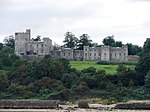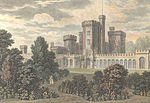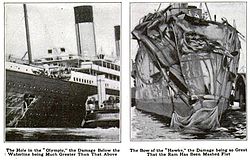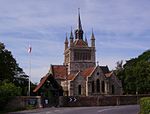Osborne Bay

Osborne Bay is a bay on the north-east coast of the Isle of Wight, England, in the eastern arm of the Solent. It lies to the east of East Cowes and is 1+1⁄2 miles (2.4 km) from the entrance to the River Medina. Its shoreline is 3⁄4 mile (1.2 km) in length and is gently curving. It stretches from Old Castle Point in the west to Barton Point to the east. It is named for the neighbouring Osborne House estate on the shore, which owns the land facing the bay. The bay has a beach, which is privately owned, is open to the public. It is around 300 yards long, and predominantly consists of shingle and sand. The seabed is a mixture of mud and sand, and is shallow up to around a 1⁄4 of a nautical mile out. In the summer, the bay is popular for yacht anchorage, being sheltered from the prevailing south-westerly winds, and can become very crowded.
Excerpt from the Wikipedia article Osborne Bay (License: CC BY-SA 3.0, Authors, Images).Osborne Bay
Geographical coordinates (GPS) Address Nearby Places Show on map
Geographical coordinates (GPS)
| Latitude | Longitude |
|---|---|
| N 50.763 ° | E -1.25 ° |
Address
Osborne
PO32 6BH , Osborne
England, United Kingdom
Open on Google Maps








